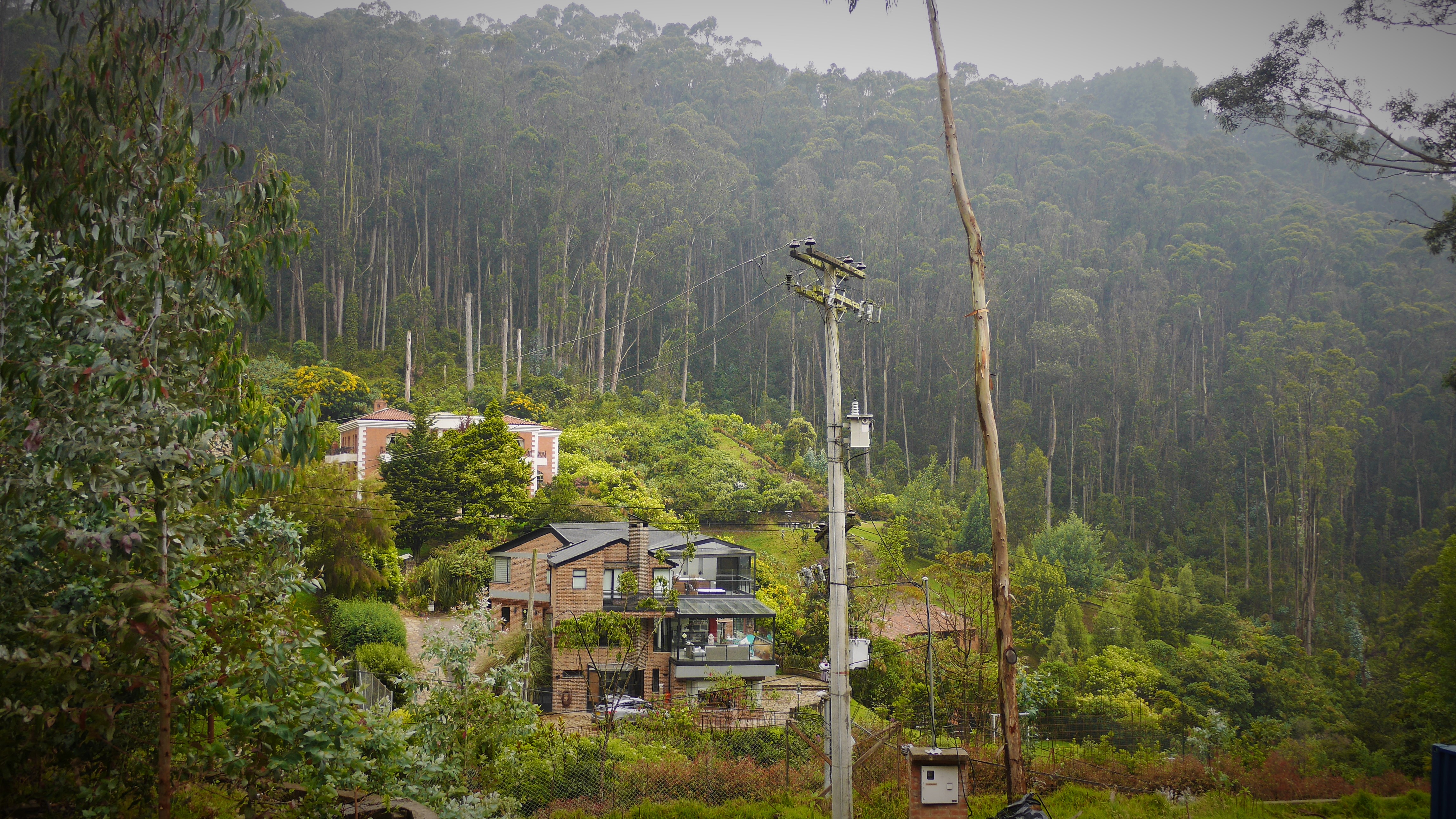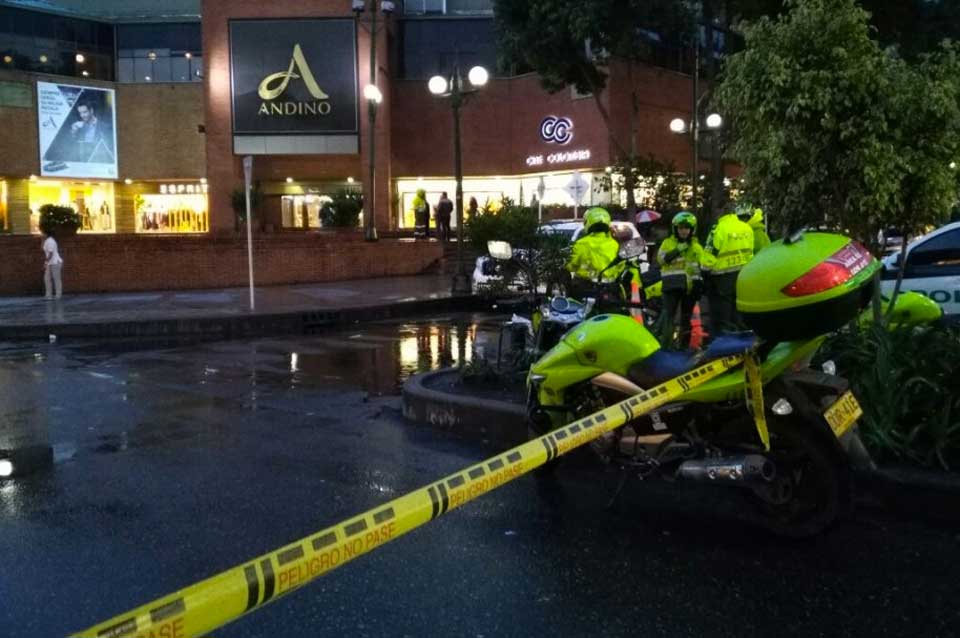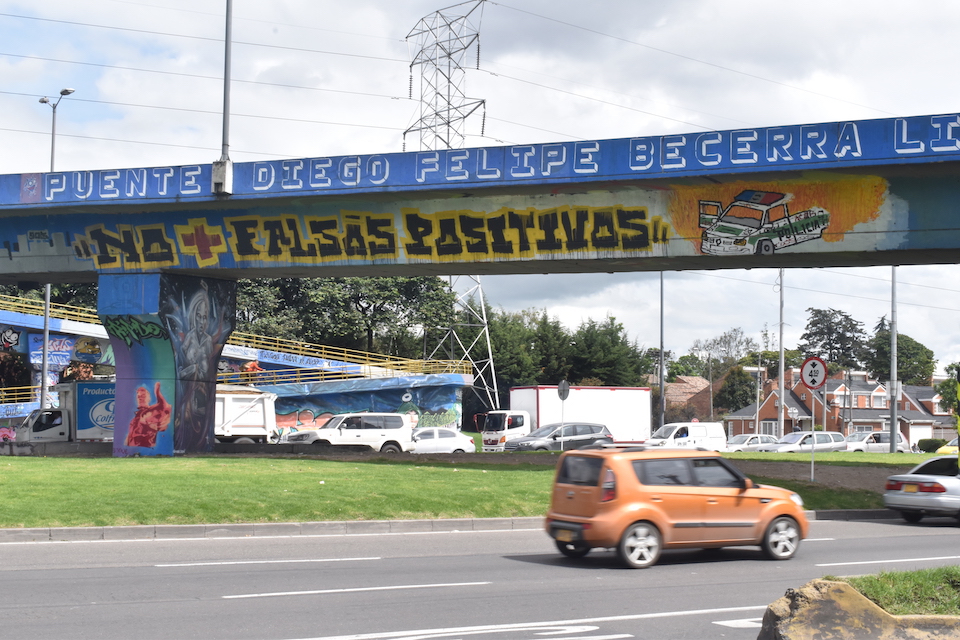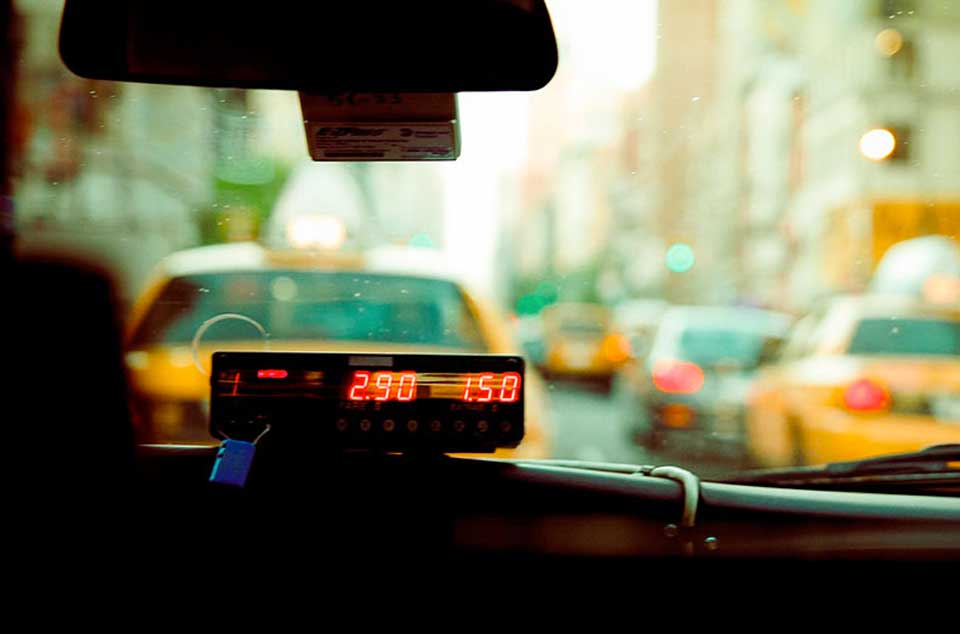
The Doña Juana landfill on the outskirts of Bogotá.
Charlotte Ryan examines Bogotá’s rubbish problem, Bogotá recycling, and the government’s apparent disregard for a growing community of environmentally conscious citizens.
Bogotá has a waste problem. A city of an estimated 8 million inhabitants, the capital produces 11 million tonnes of waste a year, according to Portafolio. Despite Mayor Petro’s Basura Cero initiative, it’s still common to see rubbish on the streets, sometimes next to the bins proudly bearing Basura Cero logos. Bogotá recycling hardly exists, and the latest crisis is old tyres – an estimated 2,050 are discarded at the side of the road, in parks or under bridges each day in Bogotá.
But the tide appears to be changing. Bogotá, like other large cities around the world, is waking up to the necessity of reducing its carbon footprint through recycling. In a recent survey, eight out of 10 citizens said they believed separating your rubbish should be obligatory. And they got their wish – in November of last year, the mayor’s office introduced the use of black and white bags to separate rubbish, and fines for those who don’t comply.
However, before you spend your time painstakingly separating the plastics from the polystyrene, the cans from the compost, you might want to look a bit closer at how Bogotá’s recycling system actually works. According to Andrea Delgado*, an ex-worker at Viridian, a contractor in Bogotá’s waste disposal sector, it doesn’t. She sums up her feelings on the topic thus: “Recycling in Bogotá is, at this point in time, totally irrational and a complete waste of time.”
Strong words, but words which, Delgado says, are completely justified. She explains that she worked for a firm contracted by the government to deal with the sometimes harmful liquids which are drawn off during the landfill process. As part of her work she visited the Doña Juana landfill site, and saw for herself that all of the rubbish collected was buried, totally invalidating the sorting process.
As she explains, “The government implemented a recycling law, but did not take into account that the landfill needed to be modified to be able to recycle. Doña Juana doesn’t have this [modification], so it doesn’t make sense for you to recycle when the district has not created a policy for the landfill.”
Not only is this approach wasteful, Delgado argues, but also dangerous. She says the supposedly decontaminated liquids funnelled off during the recycling process are drained into Bogotá’s Tunuelo River. The plant is only meant to process organic waste, but as it currently receives all kinds of rubbish including items such as fridges, according to Delgado, the water being dumped into the river is actually contaminated with heavy metals.
Fixing this situation would require money, which Delgado says the government does not have. She says that part of the reason she left her job was that this part of the public sector is constantly underfunded and at the whim of big business. The mayor’s office is also reluctant to raise money for its projects by measures such as raising taxes or increasing tariffs on water bills. The Petro administration actually decreased this tariff, “So there is no money to even attempt to recycle. So these policies are totally counter to their objectives.”
The ex-public sector worker is also critical of the government’s motives, saying “I think the only thing they are looking to do is show with dishonest policies that they are doing something for the environment, when actually neither the environment, nor the population, nor the district is served by this recycling policy.”
Delgado believes the policy is a symptom of the current political system, under which mayors are elected for four-year terms and there is no forward-thinking; an incoming mayor does not want to carry on the work of the outgoing mayor but rather come up with new, headline-grabbing policies. Following this logic, when Bogotá elects a new mayor in seven months time, it is very possible that the recently-introduced recycling law will be repealed.
As for the structure of the policy, Delgado’s view is that it wasn’t conceived of in an integrated way. As an example of this, she explains that the city’s recycling workers used to be integrated in the system, sorting rubbish on-site at the Doña Juana landfill. She says this worked well, formalising the jobs of people who usually get by on a very low income. But then, the company who ran the landfill decided to stop the programme.
Now these same recycling workers do their work on the streets of Bogotá, resulting in the open bags of rubbish you can see marring the landscape of the city. As Delgado says, “In a way they help the system to work, as they go from bag to bag sorting, but they just sell the resources to private companies.”
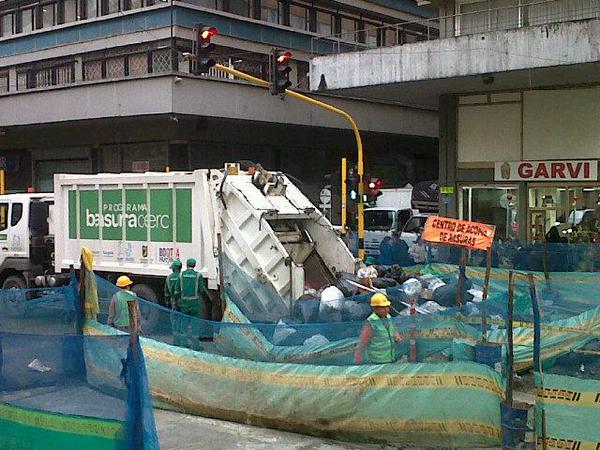
In contrast to what’s seen here, the Mayor’s office says “the rubbish trucks are not permitted to pick up white bags.” Photo: @Manolorp
Nick Ibister has a different take on things. A recycling consultant who works in waste reduction education in Portland, USA, Ibister came to Bogotá to study its recycling system and believes the city – and its recyclers – are doing something right. He says, “From Basura Cero, to the recicladores picking up all types of recycling off the street, Bogotá is a leader in many aspects.”
Ibister came to the city principally to research its informal recycling sector and was impressed by the small, efficient network of recyclers who, as he explains, are neither polluting the air nor damaging the roads with their carts. However, he also has some choice words to say about the city’s organisation when it comes to recycling. “Without the thousands of people collecting the plastic, metal, and paper off the streets, Bogotá might be faced with a pretty gruesome litter problem. The city and its citizens could do more to support the workforce that is helping Bogotá recycling and the environment more than most might realise.”
So how can Bogotá recycling be imporved? Ibister praises the business – and government-run recycling depots which sort everything by hand. And in an interview with The Bogotá Post, outgoing Environmental Vice-Secretary Julio Pulido says he believes that under Mayor Petro’s leadership, “The environment has become an important factor in making many strategic decisions for the city.”
This may be true. However, according to an article published in El Tiempo last August, only 16 percent of recyclable waste is actually making it to the depots to be recycled. The article went on to say that this percentage may be even lower.
Essentially, the problem with the current system is that Bogotá recycling relies on the city’s network of informal recyclers to do the recycling. This creates two problems: one, the recyclers’ routes only cover an estimated 40 percent of the city and two, some citizens have given up on even separating their rubbish after seeing their bags being taken away to landfill.
When asked for comment, the mayor’s office said that the Doña Juana Landfill only processes organic waste, which is picked up in black bags. The bin men are “not allowed to pick up potentially recyclable material (white bags)”, according to the spokesperson (a view challenged by those on social media). In response to claims that the Tunuelo River is being contaminated, the spokesperson says that the material discarded into the river “is subject to a process of biological and chemical treatment,” although she adds that the plant is currently implementing changes to “optimise” this system.
Delgado suggests we look to Europe for examples of how to do it right or, closer to home, Medellin. In the Antioquian city, the local government incentivised the population by making recycling into a sort of competition where the buildings, or neighbourhoods who recycled the most won a discount on their bills. The city has also created micro businesses and investment through recycling and, most importantly, invested in landfills that are capable of processing recycling.
As for the future of Bogotá recycling, Delgado thinks it will take years and education from school age onwards before the city is truly green. For now, she suggests that the best solution is to give your recyclable waste directly to the city’s recyclers.
Bogotá recycling, so it seems, right now is at the mercy of an inefficient system and an intermittent network of recyclers. As Delgado says, “It’s sad because a lot of people are becoming aware of the environment. It’s so discouraging that there is interest from the civil population but the government hasn’t put an adequate policy in place.”
* Name has been changed

